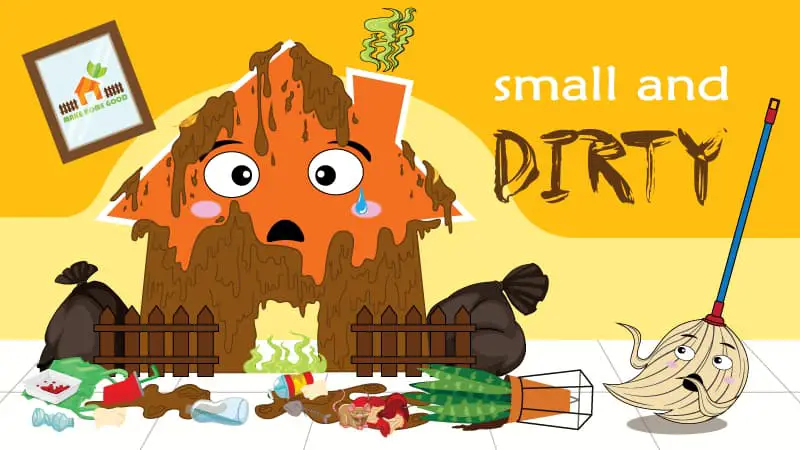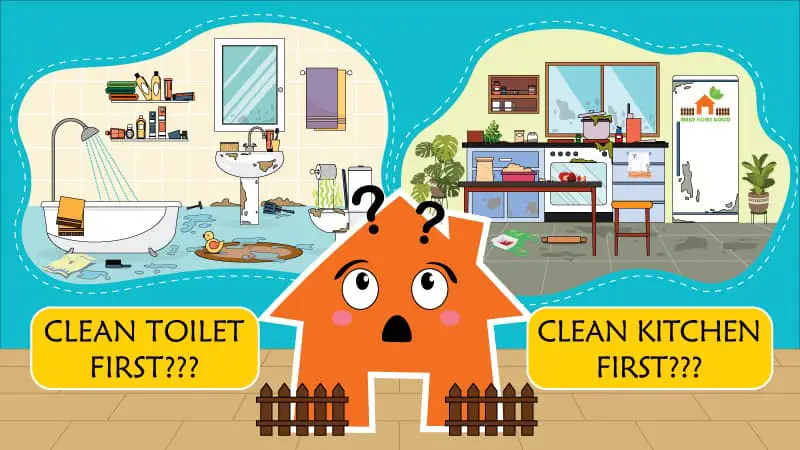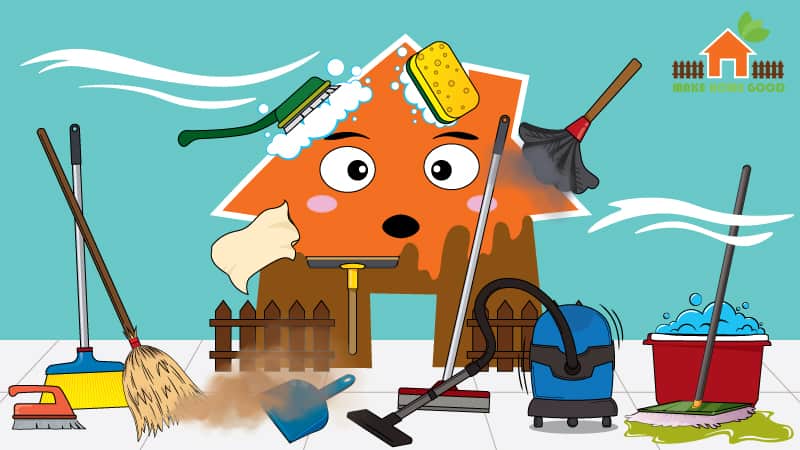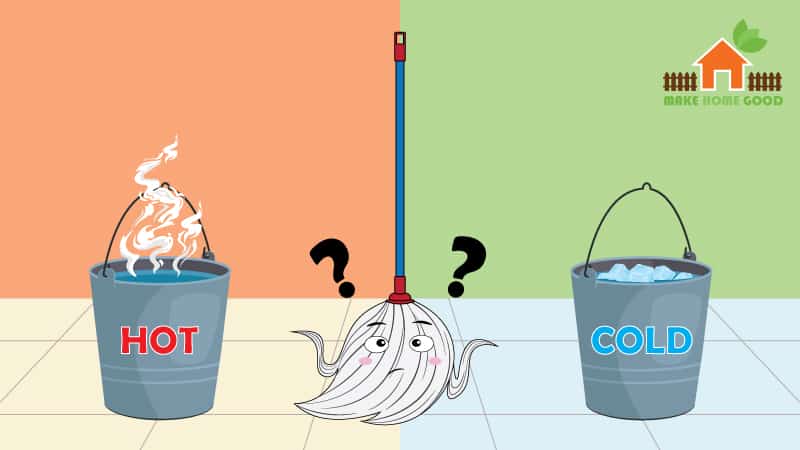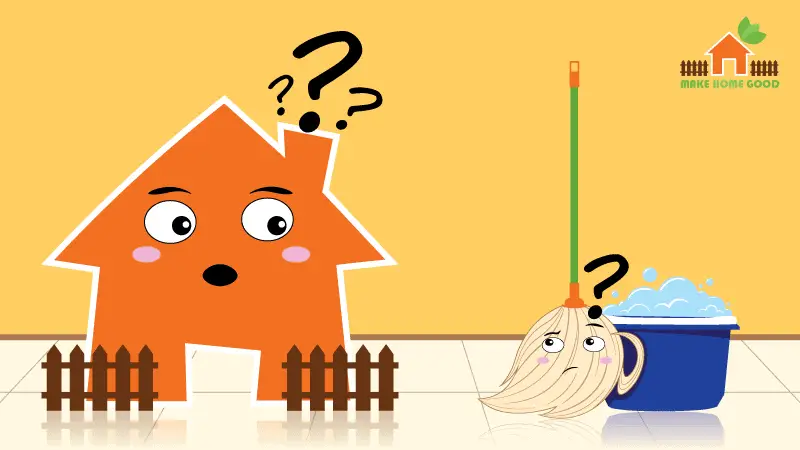Washing your kitchen floor may not be probably not your favorite activity, but you want your kitchen and the rest of your home to be as clean as possible.
We love to clean our kitchen floor, because of our kids, especially the younger ones, who occasionally spill food on the kitchen floor and still want to pick it up and eat it.
That’s why we have to make sure the kitchen floor is thoroughly clean and it is one of our daily household tasks. Over the years, we have identified the main causes of sticky floors after mopping.
Not just because of the food that our kids spill, but also because of the methods we use to clean it.
So, you’ll want to know why your kitchen floor is still sticky after all of your effort to clean it.
In this post, we’ll go over the three main reasons and explain what you should do.
Table of contents
The three main reasons your kitchen floor is still sticky after mopping
- Too much cleaning liquid
- Wrong kind of kitchen floor cleaner
- Using a dirty mop
The first reason is what we actually frequently observed. You may have used too much cleaning liquid. If you do this, it will leave a leftover sticky film on your floor.
The second reason is using the wrong kind of floor cleaner. Different floor materials require different floor cleaners, and the wrong cleaning solution could leave your floor sticky.
You may also want to read this article about natural floor cleaning solution
The third and a less common reason for having a sticky floor after mopping is using dirty mop water or washing the floor with a mop that carries sticky grime from the last time you cleaned the floors.
In the next section will go deeper on the causes of having sticky kitchen floors.
Too much kitchen floor cleaning solutions
How much floor cleaning solution is too much? This may be hard to guess, especially if you use a spray mop. These mops spray the area in front of them with cleaning liquid. If the sprayed area is large, the floor could dry before you rinse and clean it off. When this happens, the floor will dry too soon, and the result will be gritty or sticky.
If you use a spray cleaner, you can easily forestall this problem. You can spray a smaller area when cleaning, or add extra water to the cleaning solution.
Although this problem may be more common with spray mops, it can also occur with a sponge or cloth mop. Always check the label of your floor cleaning solution to find out how much water should be used to dilute it properly.
Wrong type of kitchen floor cleaning solution
It’s essential to choose the correct type of cleaner for your kitchen floor. So, what material is your floor made from? If you have a laminated or hardwood floor, you should not use a cleaner with a soap-based formula. These floors are made to be washed with a different type of cleaner. If your floor is always sticky after you mop, you should switch to a different kind of cleaning solution.
Certain types of floor material require particular types of cleaners. Hardwood floors and laminate floors should be cleaned with a solution designed to clean those surfaces. Read the label of a cleaner before you choose it; to find out what kind of floor it is intended to clean.
You can read more about different types of home cleaning solutions.
Watch for leftovers on the floor
If you’re going to do the work, you should only have to do it once. So, watch the areas you are washing to be sure you are not passing your mop over an area with a new or leftover spill. If your mop grabs some sticky food or tough grime, it could stick to the mop and end up on your floor.
If you see a food-stained area or some leftover dirt, use an acid-based cleaner like white vinegar (diluted with water) directly on that area. Once the stain is gone, your whole floor can then be cleaned with your regular floor cleaner.
Change your cleaning mop water
You are trying to clean your floor when you’re mopping it.
So, keep an eye on the water in your mop bucket. When the water in the bucket gets too brown or you see too much grime, you should get rid of that bucket full of water and fill your bucket with fresh water and a cleaning solution. Then, keep checking your bucket as you continue cleaning your floor.
If you want to use vinegar for mopping you can try it as well, you can learn more about it here.
Why is it my kitchen floor still sticky after trying everything I said above?
If you do end up with a sticky floor, don’t despair. There’s an easy solution. If you own a steam mop, clean your floor with the steam mop, and your sticky floor will be history. If you don’t have a steam mop, mix one cup of vinegar with one gallon of water.
Cleaning your floors with that solution will remove the sticky areas and leave your whole floor fresh and clean. White vinegar contains acetic acid, which can dissolve any sticky areas. However, you need to dilute the vinegar with water since plain vinegar would damage the floor’s finish.
As you can see, your floor may be sticky after mopping for several reasons. But, if you choose the correct type and amount of cleaner and be careful while you’re mopping, you can keep your floors clean and looking great.
Also read can you put vinegar in steam mops or steam cleaners.


